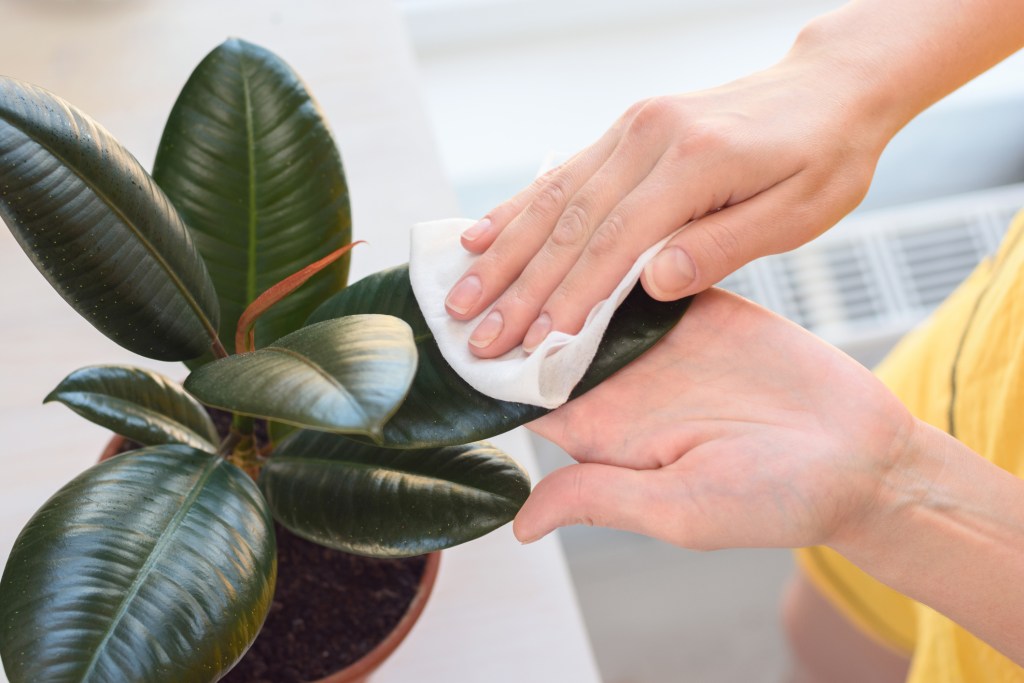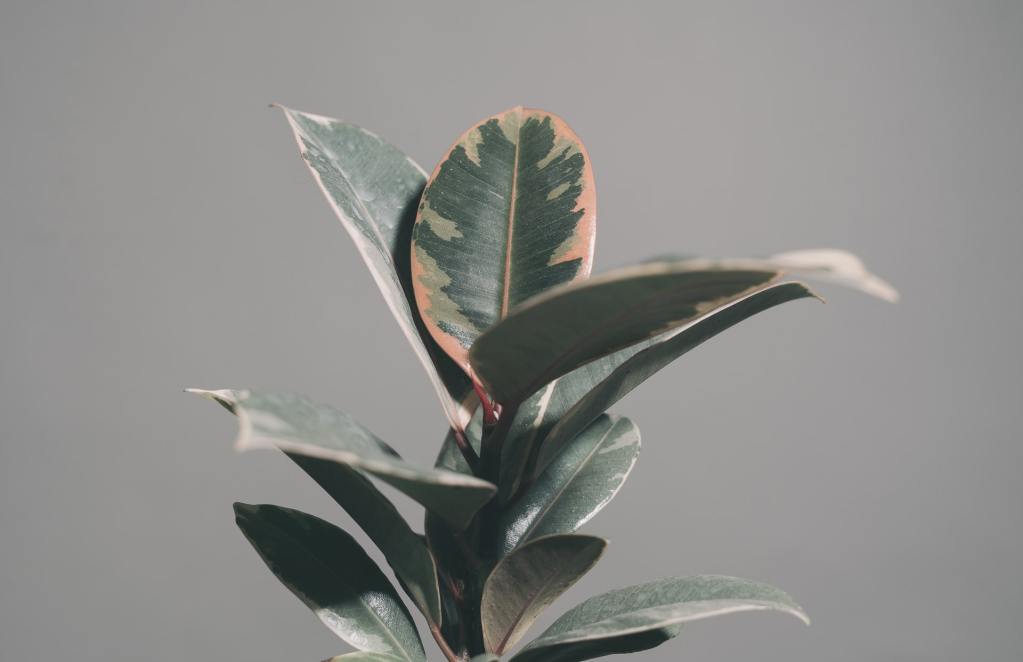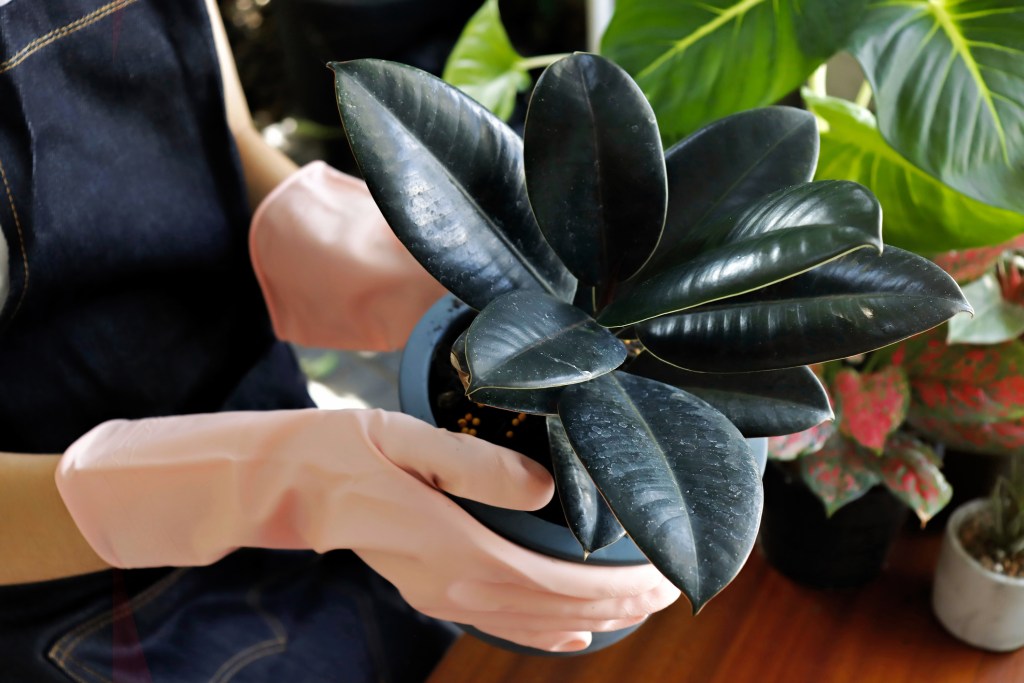Elegant and sleek, the glossy rubber plant isn’t merely a gorgeous houseplant — it’s a low-maintenance and long-lasting one as well. And there’s not just one type of rubber plant, either. If you’re curious about these striking foliage plants, here’s everything you need to know about them, as well as some of our top picks.

What are rubber plants?
Native to Southeast Asia, rubber plants are some of the most popular houseplants out there — not only are they sleek and stylish, but they’re also affordable and easy to maintain. They feature leathery oval leaves that emerge from woody stems. New rubber plant leaves grow inside reddish sheaths, which drop when the leaves are ready to unfurl.
When you cut the leaves for propagation or accidentally rip them, you might notice a white sap coming out. This sap can irritate the skin and is toxic when ingested, so be careful when you handle a rubber plant — you want to be cautious around kids and pets.

General rubber plant care
Rubber plants are some of the easiest houseplants to care for. When it comes to watering, allow your soil to dry out before giving your plant a drink. Overwatering can cause leaves to yellow and drop, especially during the winter. In the summer, keep your soil evenly moist. The rubber plant isn’t particularly picky about humidity, but it does prefer warm temperatures above 60 degrees Fahrenheit. It’s also not a heavy feeder, but it appreciates monthly feeding with an all-purpose fertilizer for strong branches and glossy leaves.
Like most houseplants, the rubber plant is a fan of bright indirect light. Hypothetically speaking, you could leave a rubber plant in low light. You won’t get much growth from it, though, and it would get leggy from stretching toward the light. Plus, the leaves on the plant might become dull, and variegated varieties could revert to green. Long story short, give your rubber plant as much light as possible — a southwest window is ideal, but keep in mind that too much direct sunlight could burn your foliage.
Every so often, wipe your leaves with a wet cloth. Not only will this make your plant look cleaner, but it’ll also help it absorb more light to convert into energy.

Different rubber plant varieties for your home
Whether you’re looking for the best plant for your home, or you simply want to collect all the rubber plants out there, here’s a list to get you started.
Ficus elastica robusta
Ficus elastica robusta is your straightforward ficus elastica with glossy, leathery medium green leaves. Compared to the following varieties, it’s more of a pure green in color. It’s considered the closest cultivar to the original ficus elastica brought over to the states from Asia; the main difference is that its leaves are wider and glossier than the original plant. All the above care tips apply to this plant for healthy growth.
Ficus elastica burgundy
The ubiquitous burgundy is another one of the quintessential rubber plants out there. It has dark green leaves with bright red veins — the leaves also emerge from red sheaths, contributing to a striking color contrast on the plant. For a variety with an even deeper foliage color, check out the Black Prince. With the burgundy, avoid overwatering it or leaving it next to drafty windows, or else the leaves may start dropping.
Ficus elastica ruby
If you love a splash of red and pink, this rubber plant variety deserves a space in your collection. This ficus elastica flaunts dark mottled leaves with a pinkish, wine-red color all over. The more sun you can give it, the more intense its color will become. Fertilizing will also help upkeep its color, although overdoing it could burn your leaves.
Ficus elastica Tineke
Though it’s a relatively recent cultivar, the Tineke is widely available. It looks similar to the ruby variety without the intense pink color. Great for pattern lovers, its leaves consist of mottled camouflage-style green leaves with cream edges and red leaf ribs. Don’t give the Tineke too much direct light, as the cream edges can burn and lose their appeal.
Ficus altissima “Yellow Gem”
The ficus altissima is more of a cousin to the rubber plant, but its care requirements and characteristics are similar. It features bright green leaves with dark green splashes and a prominent bright green ribbing. Though the leaves are leathery and produce a white sap, they differ from regular rubber plants in that they feel slightly thinner and have more pronounced veins. If we go by its color palette, it makes an excellent companion to plants such as the philodendron brasil, neon pothos, and lemon-lime maranta.

Honorable mention: Peperomia obtusifolia
Here’s an honorable mention: For a plant that’s not quite a rubber plant but still similar, check out the peperomia obtusifolia, which is sometimes called the baby rubber plant. It features thick oval leaves that have more of a shrubby rather than an upright form. If you already have your fair share of rubber plants, consider this plant.
Rubber plants can make for some of the most long-lasting pillars in a houseplant collection, as long as you don’t overwater them or snap their leaves. With sufficient fertilizing and bright indirect light, they will truly thrive and reward you with beautiful colors. From standard green varieties to splashier pink ones, choose from many rubber plant types. They won’t be tricky to source down, either. With a simple walk into a garden center or a quick search online, you can pick up this beloved common houseplant sooner than you think!
Editors' Recommendations
- Stunning Monstera plants that you should add to your indoor plant collection
- Beyond basil and cilantro, add these unique plants to your indoor herb garden
- 5 easy-care spider plant varieties perfect for any home garden
- Do ZZ plants cause cancer? Here’s the definitive answer
- Are these common houseplants safe for your cat? Read this guide to find out the scoop




